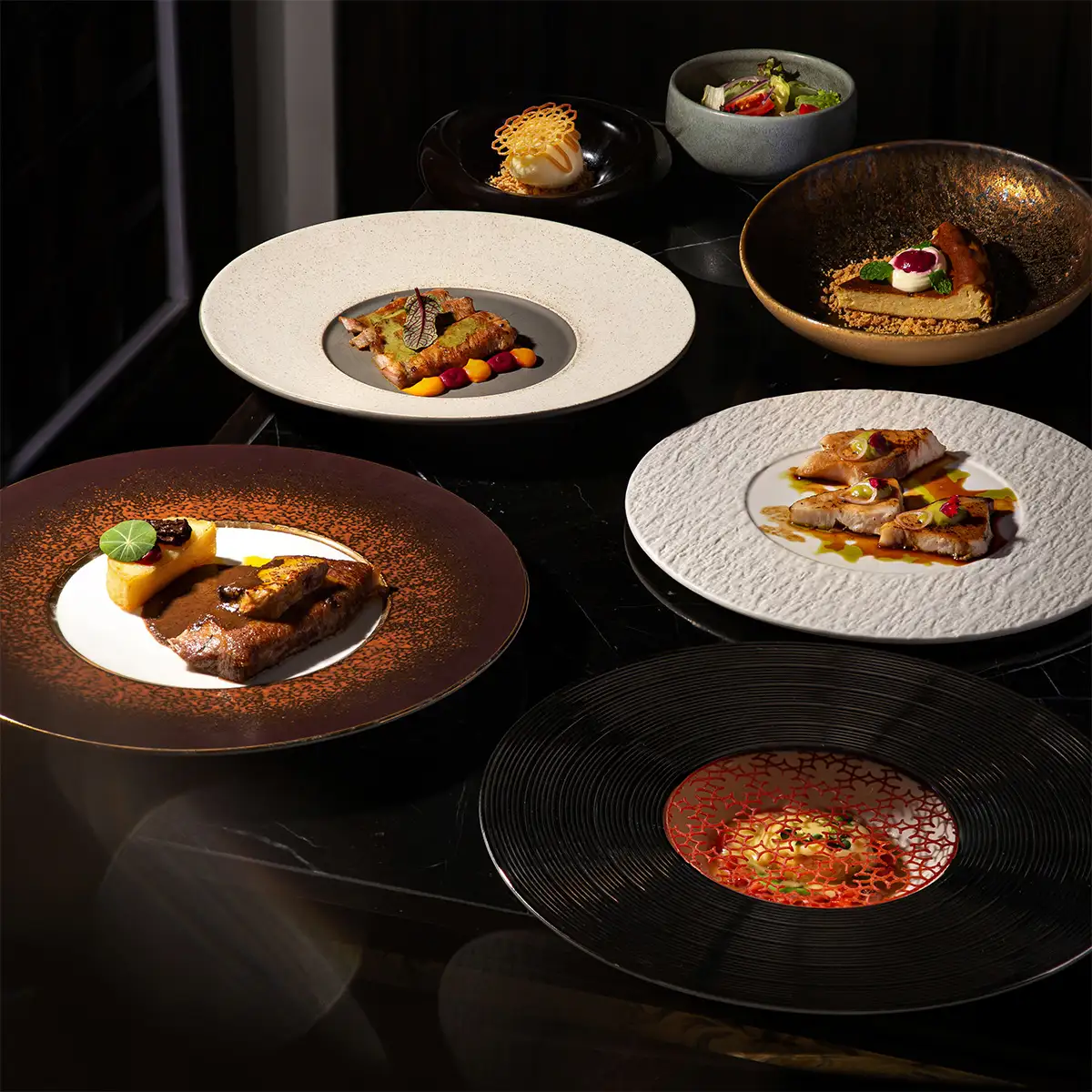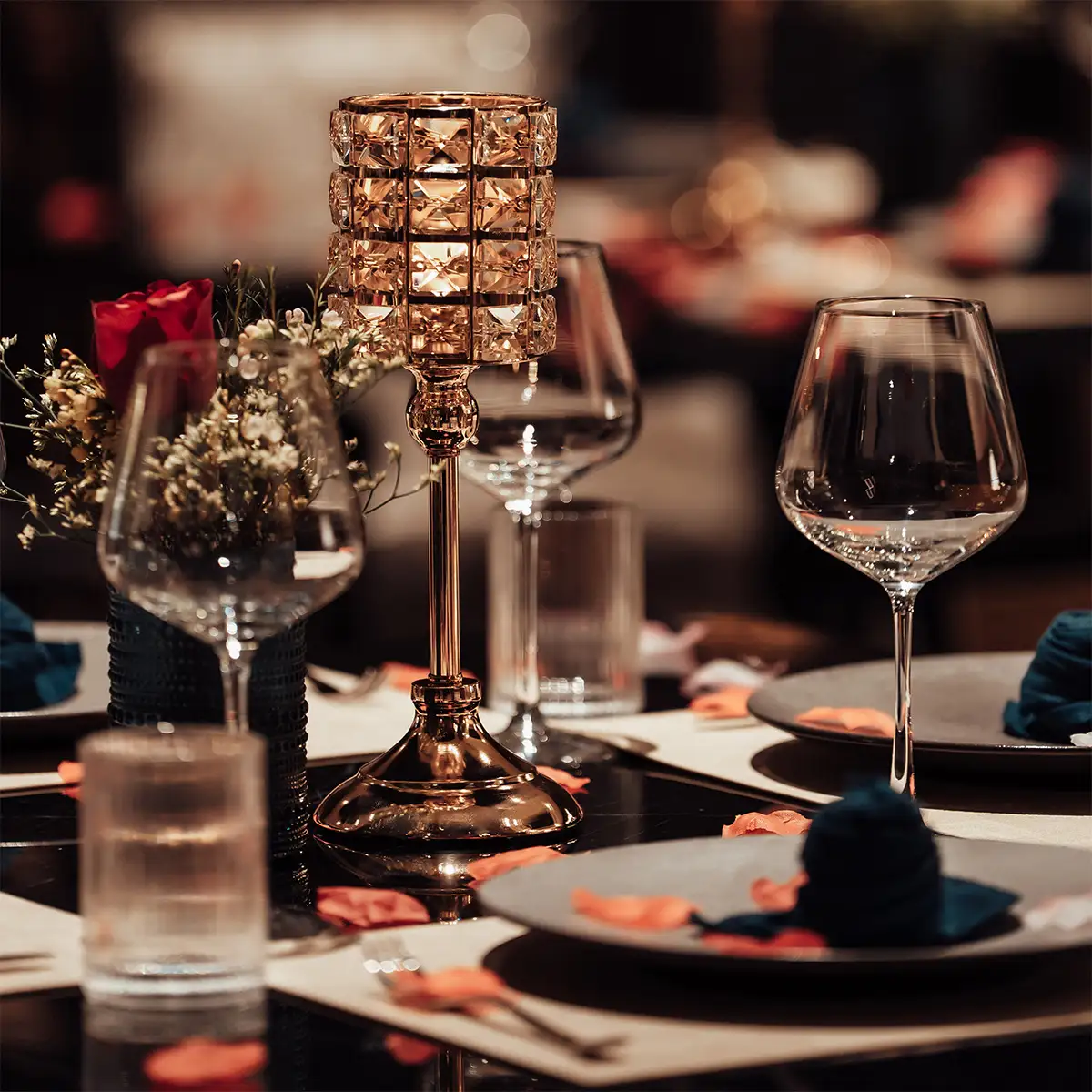- 1. Why is decoration important in a fine dining restaurant?
- 2. Basic elements of fine dining restaurant decoration
- 3. Current trends in fine dining restaurant decoration
- 4. Common mistakes when decorating a fine dining restaurant
- 5. Tips and advice for your fine dining restaurant decoration
- 6. Introducing the decoration at Moca Dining
The journey of a remarkable meal begins long before the first dish arrives. It commences the moment a guest steps into your establishment, where the fine dining restaurant decoration sets the stage for the culinary narrative you wish to tell. At Moca Dining, we understand that decoration is far more than mere beautification; it is a pivotal element in creating a holistic fine dining atmosphere, a space meticulously aligned with your culinary philosophy and the discerning tastes of your target clientele. This article aims to provide comprehensive insights into the world of fine dining restaurant decoration, culminating in a glimpse into the unique ambiance we have cultivated at Moca Dining.
1. Why is decoration important in a fine dining restaurant?
The significance of upscale restaurant interiors cannot be overstated. It's an investment that speaks volumes, influencing perception and experience in profound ways.
- Creating a first impression: The décor is the initial handshake with your guests. Even before the menu is perused, the restaurant's visual appeal forms a powerful first impression that can significantly influence a customer's anticipation and decision to dine. A thoughtfully designed entrance, for instance, can exude warmth and exclusivity, immediately setting a positive tone.
- Building a brand: Fine dining restaurant decoration is a potent tool for restaurant branding. It visually articulates your restaurant's unique identity, values, and the very essence of your culinary offerings. Whether it's classic elegance or contemporary chic, the restaurant interior concepts differentiate you from competitors and etch a memorable image in the minds of your patrons.
- Enhancing the customer experience: Beyond aesthetics, decoration is fundamental to creating a fine dining atmosphere that is comfortable, relaxing, and imbued with a sense of luxury. Strategic restaurant ambiance creation makes guests feel special and valued, transforming a meal into a cherished event. A pleasant ambiance directly correlates with higher customer satisfaction and loyalty.
- Increasing revenue: A beautifully executed luxury restaurant design can be a significant revenue driver. It not only attracts discerning customers but can also subtly encourage them to linger longer and potentially spend more. Furthermore, an exquisitely decorated space becomes an ideal venue for special events, commanding premium rates and expanding your business avenues.
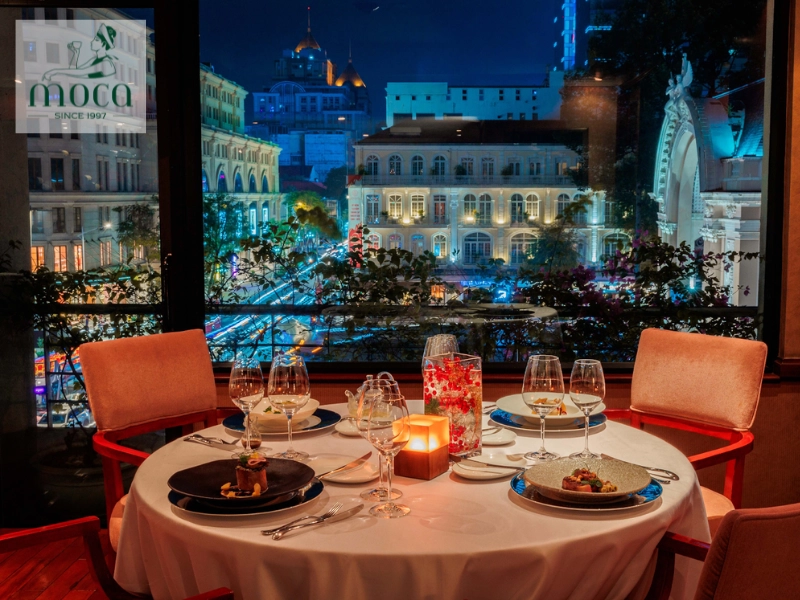
Refined décor sets the tone — in fine dining, ambiance is the silent host that welcomes every guest.
2. Basic elements of fine dining restaurant decoration
Achieving a harmonious and impactful fine dining restaurant decoration involves a careful orchestration of several key elements of restaurant decoration.
- Design style: The foundation of your restaurant interior styling is the chosen design style. Popular options include classic, modern, minimalist, and contemporary, each with its unique appeal. The key is selecting a style that resonates with your culinary identity and appeals to your target audience. For example, a restaurant serving avant-garde cuisine might opt for a bold, contemporary design, while one focused on traditional fare might embrace classic elegance.
- Color: Color is a powerful, silent communicator in high-end dining aesthetics. Strategic color combinations can create a space that feels harmonious, luxurious, and emotionally engaging. Restaurant color psychology reveals how different hues influence mood and even appetite; for instance, warm tones like reds and oranges can stimulate appetite, while cooler blues and greens can evoke calmness and sophistication. In fine dining, often subtle, rich, or tastefully combined palettes are preferred over overly bright or busy schemes.
- Lighting: Lighting design for fine dining is crucial in sculpting the restaurant ambiance. A blend of natural light, where possible, and meticulously planned artificial light is essential. Ambient lighting sets the overall mood, task lighting ensures functionality (e.g., for reading menus), and accent lighting can highlight architectural features or art pieces. Dim, warm lighting often fosters intimacy and relaxation, encouraging guests to savor their experience.
- Furniture: The choice of tables, chairs, and decorative items must align seamlessly with the overall design style. In fine dining restaurant decoration, furniture is not just functional; it’s a statement of luxury and comfort. Materials like rich woods, supple leathers, and elegant fabrics, combined with ergonomic and aesthetically pleasing designs, contribute significantly to the premium restaurant decor.
- Materials: The tactile and visual quality of materials plays a vital role. Using high-end materials such as natural wood, marble, granite, leather, and bespoke metalwork elevates the sense of luxury. The artful combination of different textures and finishes can create unique focal points and add depth to the upscale restaurant interiors.
- Music: The auditory environment is a subtle yet powerful component of the fine dining atmosphere. Music should be carefully selected to match the restaurant's style and the time of day – perhaps classical or jazz for a sophisticated dinner setting. Both volume and sound quality are critical; music should enhance the ambiance without overpowering conversation. Appropriate music can positively influence guest behavior and perception of the dining experience.
- Scent: A gentle, pleasant fragrance can contribute to a relaxing and welcoming space. This could be the subtle aroma of fresh flowers or a carefully chosen, light ambient scent. It is crucial to avoid overpowering fragrances or those that might interfere with the culinary aromas or cause discomfort to guests.

Fine dining décor is an orchestration of design, light, sound, and scent — each element enhancing the art of the experience.
Learn more: Fine Dining Table Setting: The Art of Elevated Table Presentation
3. Current trends in fine dining restaurant decoration
The world of restaurant interior trends is ever-evolving, reflecting broader shifts in design, technology, and guest expectations.
- Green design (Biophilic design): Incorporating natural elements is a significant trend. This includes the use of abundant plants, fresh flowers, living walls, and even indoor water features to create a fresh, serene, and nature-friendly space. There's also a growing emphasis on using recycled, reclaimed, and environmentally sustainable materials.
- Minimalist design: This trend emphasizes simplicity, sophistication, and functionality. It involves clean lines, uncluttered spaces, a focus on high-quality materials, and often a palette of neutral colors, allowing the cuisine and subtle design details to take center stage.
- Personalized design: Increasingly, fine dining restaurant decoration aims to create a unique space that tells a story or reflects the distinct personality of the owner or chef. This can be achieved through curated artwork, bespoke furniture, handcrafted decorative items, and unique architectural features.
- Using technology: Technology is being integrated more seamlessly into luxury restaurant design. This can range from sophisticated smart lighting systems and state-of-the-art sound systems to more interactive elements like digital menus or subtle projections. The goal is to enhance the guest experience, improve operational efficiency, and create unique, memorable moments.
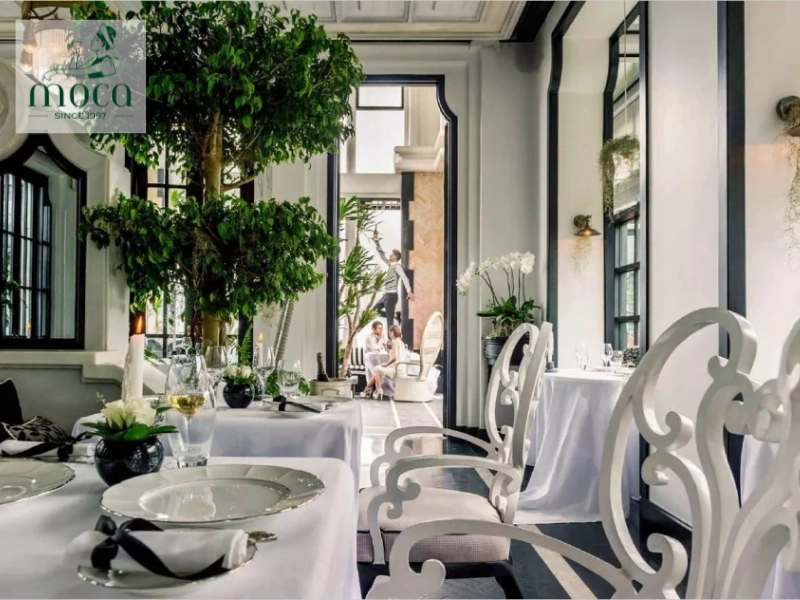
Today’s fine dining décor blends nature, minimalism, personality, and technology — creating spaces that are both elegant and experiential.
4. Common mistakes when decorating a fine dining restaurant
Even with the best intentions, certain pitfalls can compromise the effectiveness of your fine dining restaurant decoration.
- Lack of consistency: A common error is the absence of a clear, cohesive design style. Using too many disparate colors, mixing incompatible decorative elements, or having a theme that doesn't align with the cuisine can create a confusing and unsettling restaurant ambiance.
- Lack of attention to lighting: Lighting is often underestimated. Spaces that are too bright can feel stark and unwelcoming, while those that are too dark can be impractical and gloomy. The absence of accent lighting to create focal points and add depth is also a missed opportunity.
- Using uncomfortable furniture: Aesthetics should not come at the expense of comfort. Tables and chairs that are of an inappropriate height, or chairs that lack adequate back support, can significantly detract from the dining experience, no matter how visually appealing they are.
- Not paying attention to detail: The smallest details collectively make a significant impact. Overlooked aspects such as poorly dressed tables, worn-out menus, or, critically, unclean or poorly maintained restrooms can severely tarnish a guest's overall perception of the establishment.

In fine dining, missteps in lighting, furniture, and cohesion can undermine even the best cuisine — every detail counts.
5. Tips and advice for your fine dining restaurant decoration
Embarking on a fine dining restaurant decoration project requires careful thought and planning.
- Seeking ideas: Immerse yourself in the world of design. Consult design magazines, reputable websites, and social media platforms for inspiration. Visiting other successful fine dining restaurants can also provide valuable insights and spark ideas for your own restaurant interior concepts.
- Hire an expert: The complexity of luxury restaurant design often necessitates professional expertise. Engage experienced architects and interior designers who specialize in hospitality. They can provide invaluable advice, develop a design that aligns with your vision and budget, and navigate the intricacies of sourcing and execution.
- Detailed planning: Thorough planning is paramount. Clearly define your design style, color palettes, material choices, and furniture selections. Develop a realistic budget and a detailed timeline for the project to ensure a smooth process.
- Construction supervision: Diligent supervision during the construction and installation phase is crucial. This ensures that the execution aligns perfectly with the approved design and that the quality of materials and workmanship meets the highest standards expected in fine dining restaurant decoration.

Great fine dining décor starts with inspiration, expert guidance, and meticulous planning — turning vision into timeless elegance.
Learn more: Fine Dining Restaurant: Discover The Ultimate Culinary Experience
6. Introducing the decoration at Moca Dining
At Moca Dining, we believe our fine dining restaurant decoration is an integral part of the exceptional experience we offer. Our space has been meticulously crafted to create an ambiance that is both breathtaking and intimately comfortable.
The Moca Dining decoration is a harmonious blend of timeless elegance and contemporary sophistication. We aimed to create an environment that feels both grand and welcoming, a sanctuary where guests can truly savor their culinary journey.
Our unique decor is characterized by a stunning interplay of Gothic architectural influences thoughtfully integrated with sleek, modern features. This juxtaposition creates a visually dynamic and memorable space. We have utilized an array of high-end materials, including rich, dark woods, polished marble, bespoke metal accents, and sumptuous textiles. Sophisticated decorative details, from custom art installations to carefully curated lighting fixtures, further enhance the premium restaurant decor. The resulting restaurant ambiance creation is one of a cozy, luxurious, and deeply romantic atmosphere, perfect for intimate dinners and special celebrations.
We invite you to explore the many beautiful decorative corners within Moca Dining, each designed to delight the eye. Allow yourself to be enveloped by the luxurious and cozy space we have created. We encourage our guests to capture their memorable moments; our sophisticated restaurant styling provides a stunning backdrop for souvenir photos.
To experience the unique ambiance and exquisite cuisine of Moca Dining, we recommend making a reservation in advance. You can find detailed instructions on how to book a table and directions to our restaurant on our website.
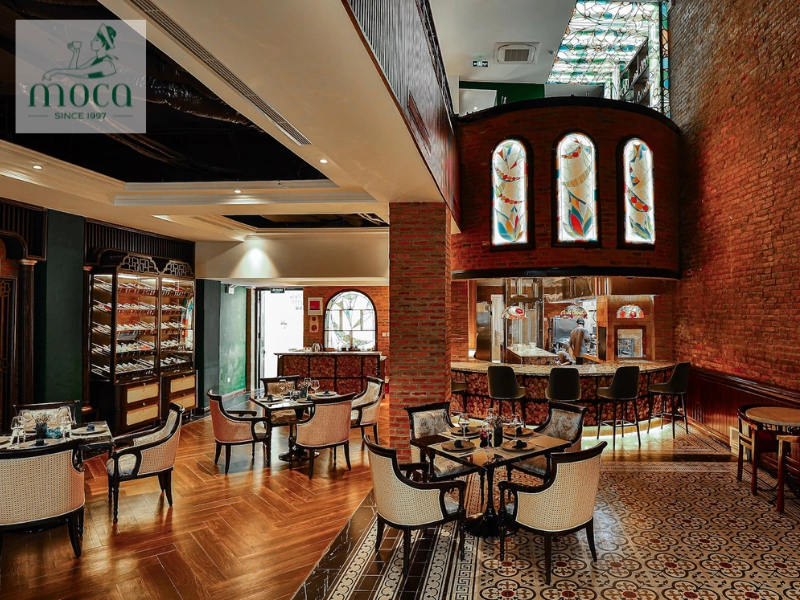
Moca Dining — where Gothic elegance meets modern sophistication, creating a luxurious and intimate dining sanctuary.
In conclusion, fine dining restaurant decoration is far more than an aesthetic overlay; it is a fundamental pillar in designing memorable dining experiences. It shapes perceptions, influences emotions, and ultimately contributes to the overall success and reputation of an establishment. We encourage you to apply the knowledge shared here to envision and create a restaurant space that is not only unique and impressive but also deeply resonant with your brand and guests.
And, of course, we cordially invite you to visit Moca Dining, to personally experience the sophistication, luxury, and meticulously crafted fine dining atmosphere that awaits.






